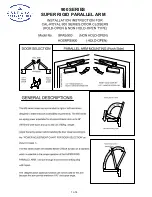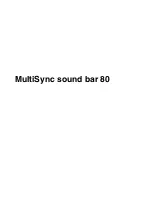
SAFETY
Plasma cutting can be performed on any type of conductive metal - mild steel,
aluminium and stainless are some examples. With mild steel, operators will
experience faster, thicker cuts than with alloys. Oxy-fuel cuts by burning, or
oxidizing the metal it is severing. It is therefore limited to steel and other ferrous
metals which support the oxidizing process. Metals like aluminium and stainless
steel form an oxide that inhibits further oxidization, making conventional oxy-fuel
cutting impossible. Plasma cutting however does not rely on oxidation to work
and thus it can cut aluminium, stainless and any other conductive material. While
different gasses can be used for plasma cutting, most people today use
compressed air for the plasma gas. In most shops, compressed air is readily
available, and thus plasma does not require fuel gas and compressed oxygen for
operation. Plasma cutting is typically easier for the novice to master, and on
thinner materials, plasma cutting is much faster than oxy-fuel cutting. However,
for heavy sections of steel (1" and greater), oxy-fuel is still preferred since
oxy-fuel is typically faster and, for heavier plate applications high powered
plasma machines are required for plasma cutting applications.
How Does Plasma Cutting Compare to Oxy-fuel (gas) cutting?
The plasma Cutting process involves creating and electrical channel of
super¬heated. electrically ionized gas i.e. plasma from the plasma cutter itself,
through the work piece to be cut, thus forming a completed electric circuit back
to the plasma cutter via a grounding clamp. This is accomplished by a
compressed gas (Oxygen,air, inert and others depending on material being cut )
which is blown through a focused nozzle at high speed toward the work piece. An
electrical arc is the formed within the gas. between an electrode near or
integrated into the gas nozzle and the work piece itself. The electrical arc ionizes
some of gas. thereby creating and electrically conductive channel of plasma. As
electricity from the cutter torch travels down this plasma it delivers sufficient
heat to melt through the work piece. At the same time, much of the high velocity
plasma and compressed gas blow the hot molten metal away. thereby separating
i.e. cutting through the work piece.
NOTE: This machine is designed to use only compressed air as gas.
Plasma Introduction
The plasma cutting machines are typically more expensive than oxy/acetylene.
Also. oxy/acetylene does not require access to electrical power or compressed air
which may make it a more convenient method for some users. Oxyfuel can
generally cut thicker sections (>63164 inch) of steel more quickly than plasma.
What are the limitations to Plasma Cutting?
Where is Oxyfuel preferred?
06
PLASMA CUTTER
OPERATION MANUAL








































